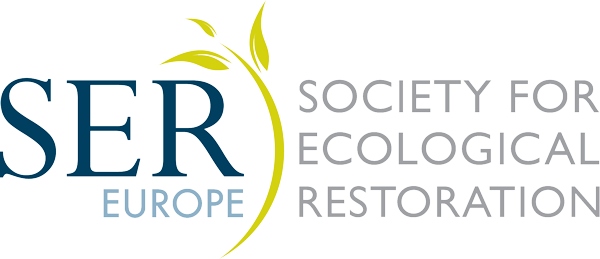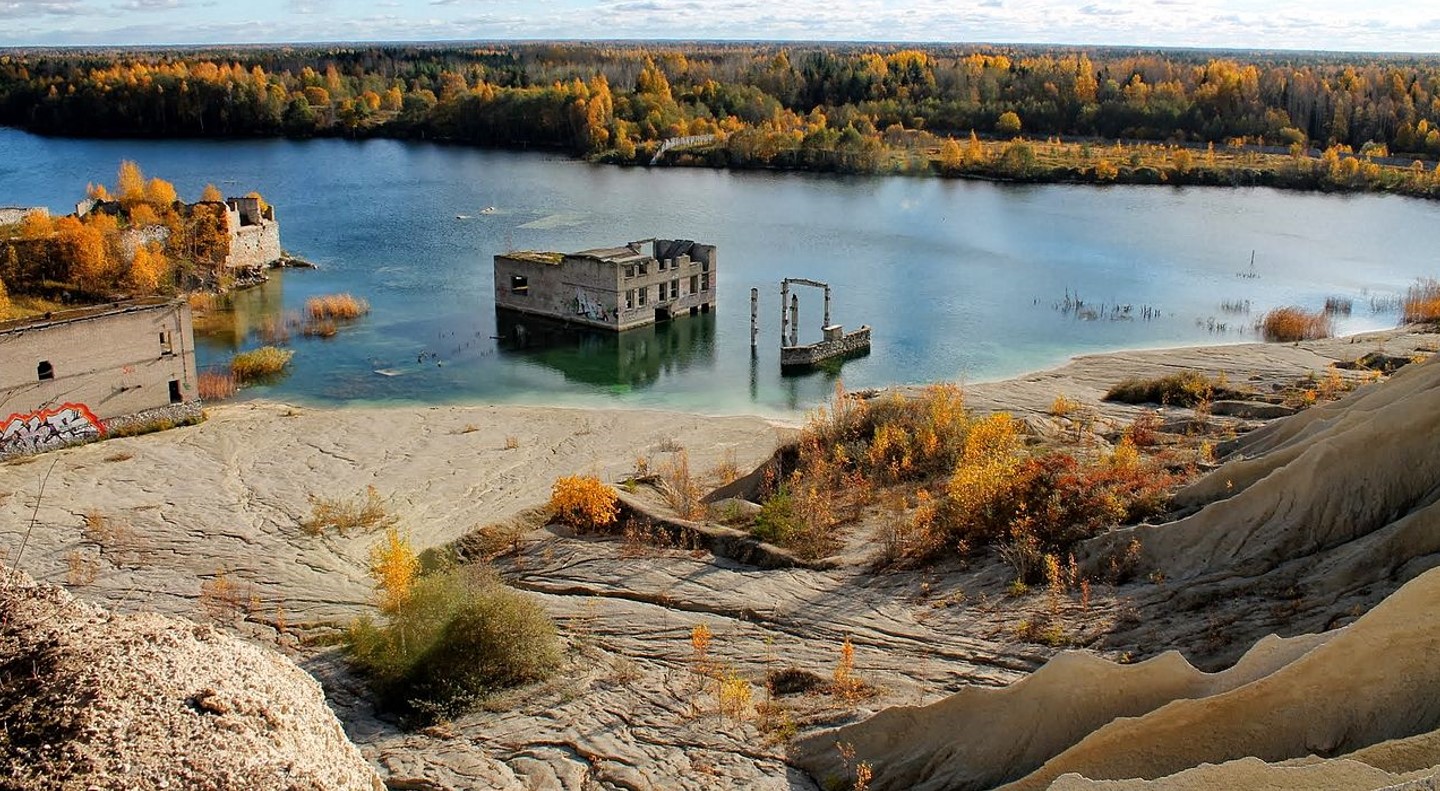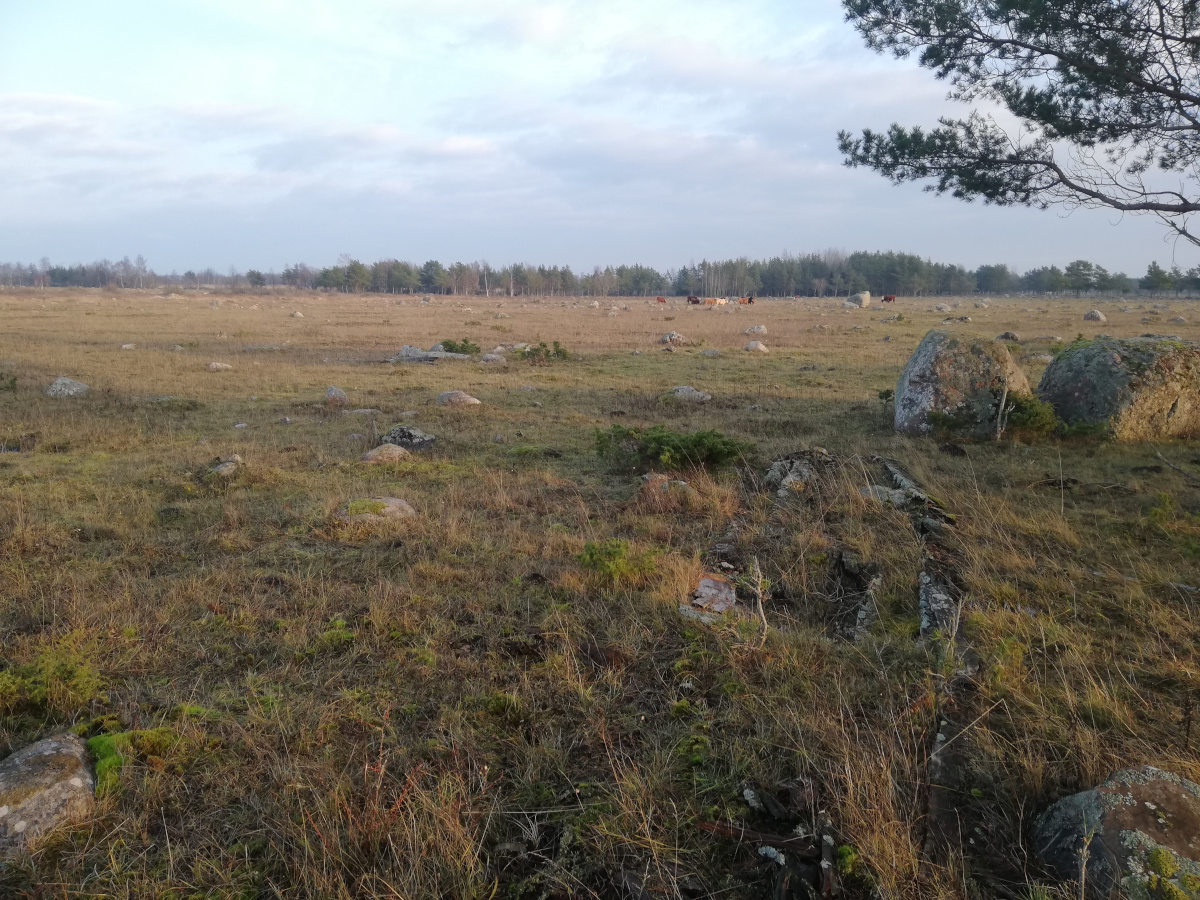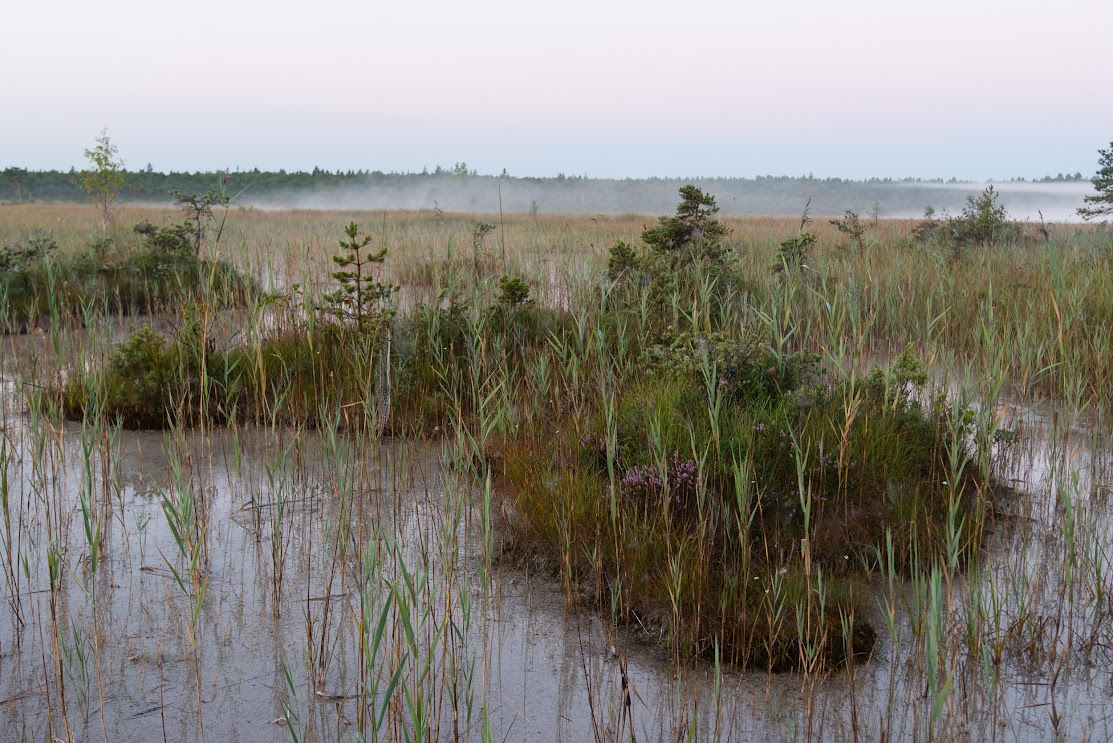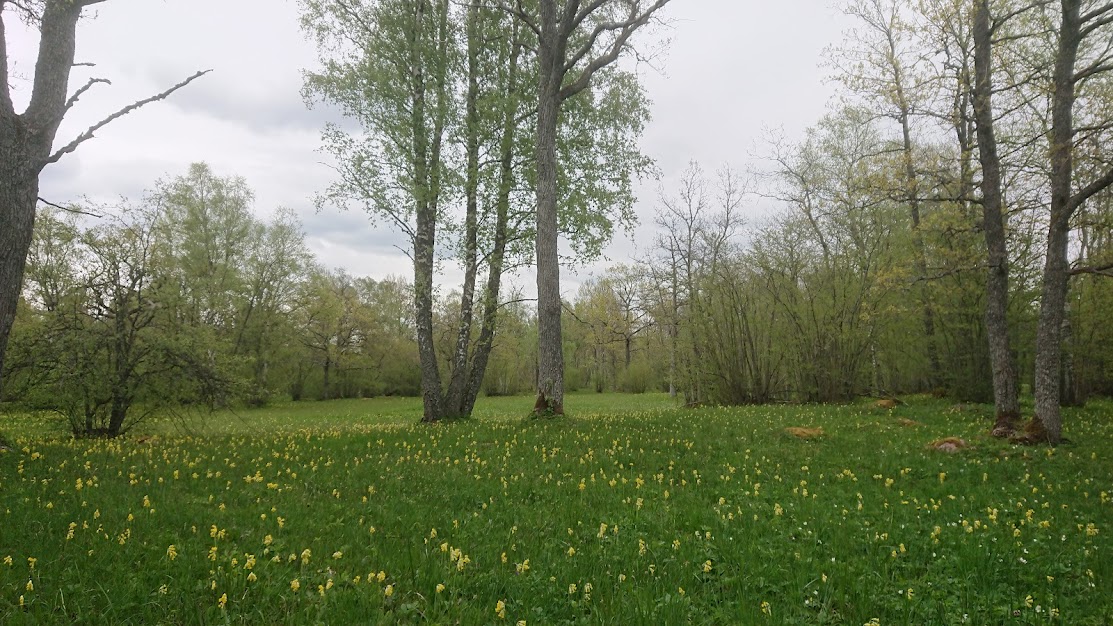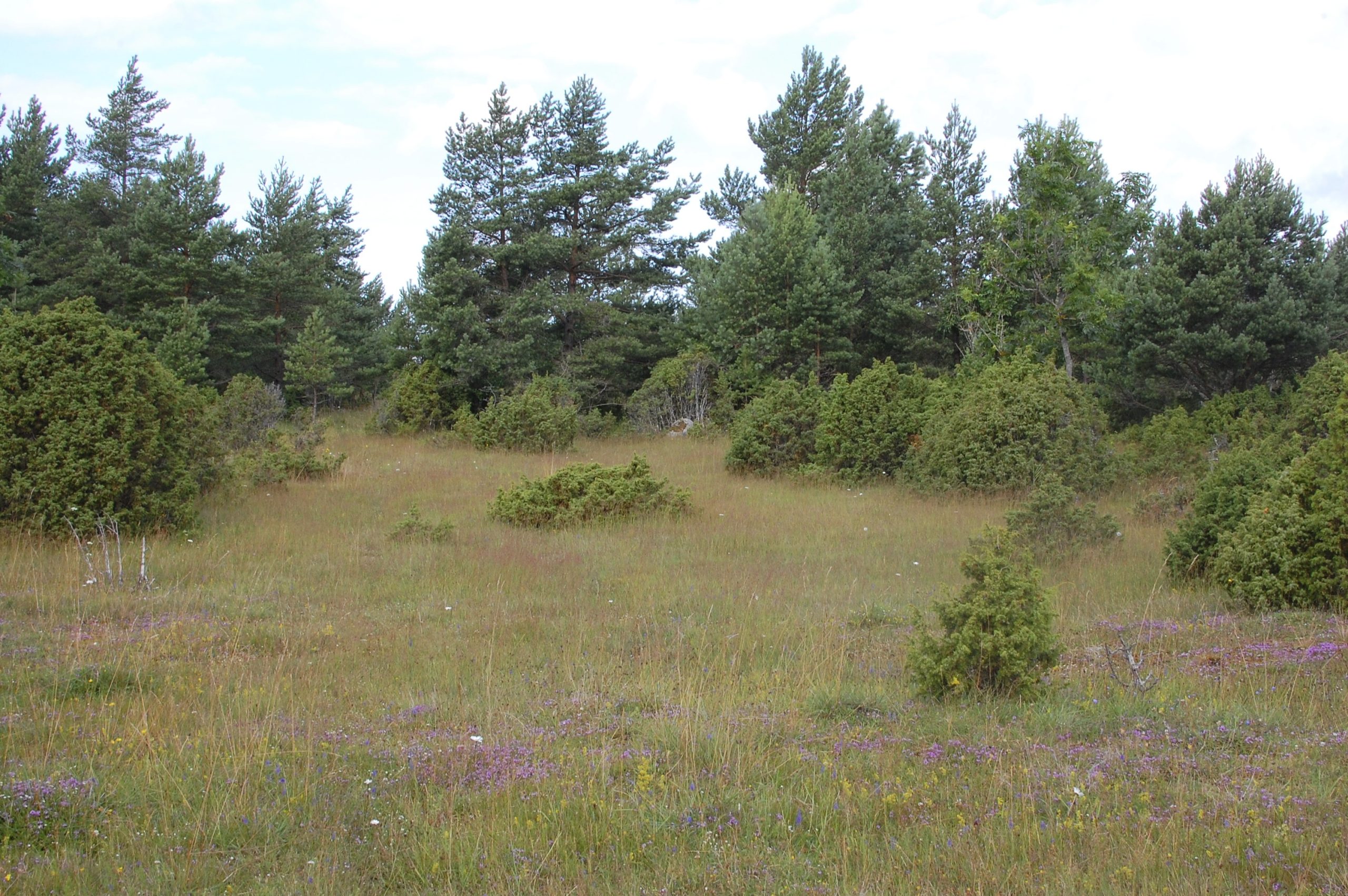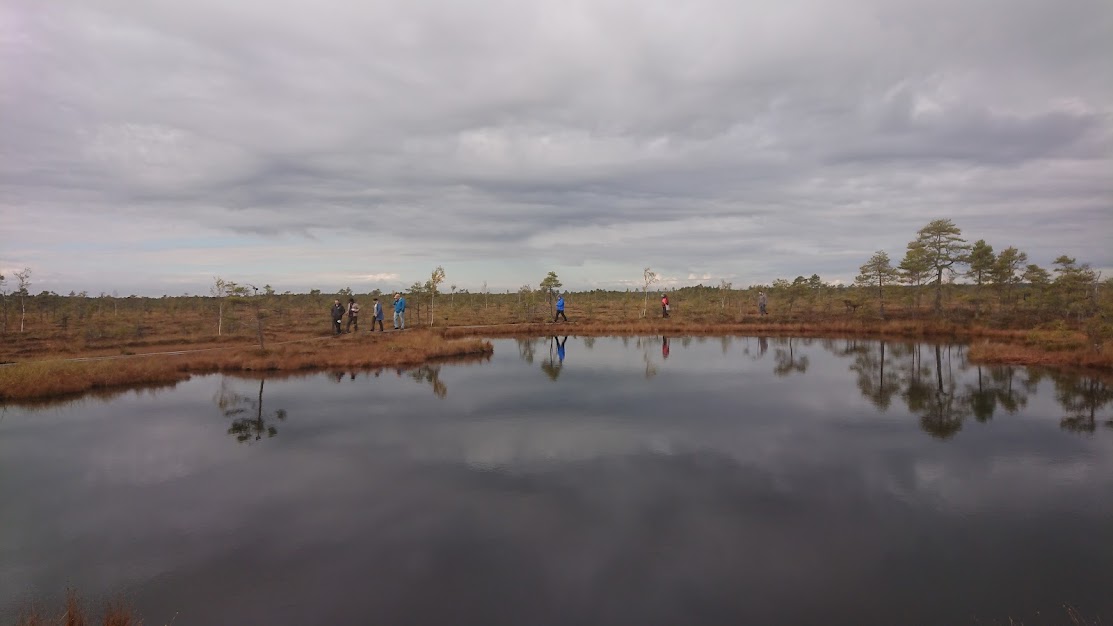Long pre-conference excursions on August 23-25
North-West Estonia - forests, alvar grasslands and mires
Duration: 3 days (23-25 August)
Price: 350 €/person
Max number of participants: 18
This excursion takes you to North-West Estonia with its variable landscapes and different ecosystems. The area has outcrops of Ordovician limestone with shallow-soil calcareous alvar grasslands, large mires - both raised bogs and fens, and sand dunes from the times when water levels of the Baltic Sea were higher.
During the first day of the excursion, we will visit the newly established Sõrve nature reserve with its variable wetlands and forests and hear the story of the establishment of the nature reserve - it took 17 years to get the nature reserve finalised! Our guide was one of the people behind the idea of the reserve and has been fighting for the establishment of the reserve for all these years. Next, we will visit the former limestone quarry in Rummu - currently a popular adventure park. The site has a spectacular gravel “mountain”, gives a glimpse into soviet history and a possibility to discuss quarry restoration.
The most exciting part of the excursion takes us to Pakri islands where we’ll spend an entire day listening to stories about the islands’ history and discovering its beautiful nature. For centuries, Pakri islands were inhabited by Swedes. In 1934, there were around 350 inhabitants and more than 100 farms. But the Second WW and the following soviet occupation changed history drastically - all inhabitants were forced to leave or flee, mostly to Sweden, a Soviet army base was established on the islands and it was used as a bombing polygon. In addition to its dramatic history, Pakri islands have the largest intact alvar grasslands in Estonia and picturesque limestone cliffs along the northern coast. Altogether, there are 1,600 ha of different semi-natural grassland habitats on the islands (1,100 ha are alvars). Pakri islands are lucky to host Estonia's largest heritage grassland manager who takes care of 1,100 ha of semi-natural grasslands, mostly with the help of cattle. In the northern part of Suur-Pakri, there is a 500-ha area where the cattle are out all year round without getting extra fodder - this is Estonia's largest rewilding area that you just have to see!
The day on Pakri, however, is dependent on the weather - if it is too stormy to take the boat to the islands, we have a “plan B” - an equally interesting trip to the Nõva area with old sand dunes, pine forests and mires with a possibility to check out some eagle nests.
The last part of the excursion is dedicated to Estonian mires - we will first visit Lake Valgejärve, a large spring-fed lake with mire formation on its shores. You will see both fen vegetation, transitional mire and small patches of bog vegetation along the 5 km walking trail. While Estonia still has a lot of intact mire areas, we also have vast wetland areas strongly influenced by drainage. Over the last decade, and especially over the last five years, there have been numerous mire-restoration projects all across the country. On our way back to Tartu, we will also visit one of the sites where our state-owned forestry company has restored a mire in Tõrasoo.
Several planned stops involve some walking - up to 4 or 5 km in some sites. It is advisable to wear comfortable hiking shoes or boots. While we can not guarantee nice weather, the end of August in Estonia usually has nice warm days (around 20 degrees C) but relatively cool nights. We will stay in a small tourist farm Rehe where the conditions are relatively basic but comfortable. You will share rooms (two to three persons in a room), there are shared bathrooms and toilets.
The excursion will be led by Triin Reitalu and Gunnar Sein. Triin is a researcher and plant ecologist at the University of Tartu working with the monitoring of different restoration projects and with a special interest in landscape history. Gunnar works in the Estonian Environmental Board and is in charge of the land management bureau, he knows all about the management of semi-natural grasslands and about communication with landowners and managers. Gunnar is also interested in birds, especially birds of prey.
Price includes:
- Transportation (bus and boat to the island)
- Accommodation for two nights in a tourist farm
- All meals during the excursion
- Entrance fees and guided walks
The maximum number of people on the excursion is 18, minimum is 12.
Preliminary schedule (details can change)
Day 1 (23rd of August)
Start from Tallinn 9 AM.
Sõrve nature reserve: 4-km hike, story of Sõrve Nature reserve, guide Val Rajasaar
Lunch at a local restaurant
Rummu quarry: small hike to the “mountain” in the quarry, discussions about quarry restoration.
Night at the Rehe tourist farm
Day 2 (24th of August)
Full day on Pakri islands with a packed lunch.
“Plan B” (in case of stormy weather): Nõva area, visiting sand dunes, pine forests, and heathlands.
Night at the Rehe tourist farm, sauna in the evening
Day 3 (25th of August)
Valgejärve Lake: 5 km hike through mires and mire forests surrounding the lake.
Lunch at a local restaurant
Tõrasoo mire restoration area along the way to Tartu.
Bus trip to Tartu (with the possibility to take public transportation to Tallinn).
!!Observe!! that some one-day excursions on the 26th depart from Tartu, some from Tallinn. If you choose an excursion from Tallinn for the 26th, we will drop you off in Tallinn and you can catch an excursion from there the next morning.
We will send a more detailed schedule to registered participants as well as questions about dietary preferences, etc.
For further questions, please contact info@sere2024.org
Western Estonia - restoration of semi-natural grassland communities and wetlands
Duration: 3 days (23-25 August)
Price: 350 €/person
Max number of participants: 18
This three-day excursion takes you from Tallinn to the coastal regions of western Estonia and two Estonian islands - Muhu and Saaremaa. Western Estonia is less influenced by intensive agriculture and industrialisation than other parts of the country and therefore the best area to enjoy our biodiversity. We will see large semi-natural grasslands, wetlands and traditional villages.
A century ago, more than one-third of Estonia was covered by semi-natural grasslands (wooded meadows, alvars, floodplain and coastal meadows). Similarly to the rest of Europe, semi-natural grasslands in Estonia have been abandoned or afforested during the last part of the 20th century and the total area of the semi-natural communities has decreased drastically. However, over the last two decades, Estonia has restored thousands of hectares of semi-natural grasslands. Even though it is a fraction of its former glory, the area of managed semi-natural grasslands has increased, and connectivity between the remaining grassland fragments has improved.
The first day of the excursion takes us to Matsalu National Park, famous for its bird protection area, vast reedbeds and large-scale restoration of coastal meadows. In 1976, Matsalu was added to the Ramsar List of Wetlands of International Importance. It is a paradise for bird watchers with millions of migratory birds flying through, feeding and nesting in its coastal meadows and reedbeds.
Next, we will visit the Laelatu wooded meadow that holds several world records of species richness: 42 species have been found from a 20x20 cm area and 25 species from a 10x10 cm area. Part of Laelatu has been continuously managed but several areas have been recently restored and we can get a good overview of the different stages of wooded meadow restoration.
By the evening of the first day, we will take the ferry to Muhu Island. During the second day of the excursion, you will see Muhu island and the eastern part of Estonia's largest island, Saaremaa. Muhu is the island of alvars: calcareous grasslands on shallow soils right on top of the Silurian bedrock. In 2014-2019, 2,500 ha of alvar grasslands were restored with the help of “LIFE to alvars” project (LIFE13NAT/EE/000082). Currently, the next project titled “LIFE Connecting Meadows” (LIFE19 NAT/EE/001006) aims to increase the connectivity of alvar grasslands on Muhu. The active local community in Muhu has made considerable efforts to better recognise and value the local products coming from semi-natural areas - meat, wool, honey, woodcraft, and herbs can all be bought locally. On Muhu, we will visit several alvar restoration sites and then make a detour to Saaremaa to see recently restored wooded meadow areas. Restoration of wooded meadows is currently on top of the restoration agenda in Estonia - the WoodMeadowLife project (LIFE20 NAT/EE/000074) aims to restore 500 ha of wooded meadows in Estonia and 200 ha in Latvia.
The last day of our excursion will be dedicated to bogs. We will visit the Lavassaare peat excavation area where peat has been and is still being excavated on hundreds of hectares. The abandoned parts of the excavation area are being restored with the help of WaterLANDS project. After the relatively devastating site of peat excavation fields, we will visit Estonia's largest intact bog area in Soomaa National Park. Soomaa is also known for its “fifth season“ - when water from heavy rain or snowmelt floods the region, making the traditional dugout canoes the most reliable form of transportation. We will arrive in Tartu by the evening of 25th August.
Several planned stops involve some walking - three to four km in some sites. It is advisable to wear comfortable hiking shoes or boots. While we can not guarantee nice weather, the end of August in Estonia usually has nice warm days (around 20 degrees C) but relatively cool nights. Our accommodation over the two nights will be in Muhu, in a horse tourist farm called Tihuse. The conditions are relatively basic but comfortable. You will share rooms (two to three persons in a room), and for some of the rooms, there are shared bathrooms and toilets. The owners of the tourist farm also manage hundreds of hectares of Muhu seminatural grasslands with the help of their horses and cattle.
The excursion will be led by Aveliina Helm and Elisabeth Prangel. Aveliina is a professor of restoration ecology at the University of Tartu working with a wide range of restoration projects and advising the Estonian Minister of Climate. Elisabeth is a PhD student at the University of Tartu, soon defending her thesis that focuses on ecosystem services in semi-natural grasslands.
Price includes:
- Transportation (bus and ferry to Muhu)
- Accommodation for two nights in a tourist farm
- All meals during the excursion (except one lunch when you can pick between the restaurants on the “food street” of Muhu island)
- Guided walks
The maximum number of people on the excursion is 18, minimum is 12.
Preliminary schedule (details can change)
Day 1 (23rd of August)
Start from Tallinn 9 AM.
Matsalu national park
Lunch at a local restaurant
Laelatu wooded meadow
Ferry to the Island Muhu
Dinner at the accommodation
Day 2 (24th of August)
Alvar grassland restoration areas in Muhu
Visit to the Koguva traditional village
Lunch on Muhu food street (not included in the price)
Wooded meadow restoration sites in Liigalaskma
Visit to Maasilinn mediaeval castle ruins
Dinner at the accommodation
Day 3 (25th of August)
Ferry back to the mainland
Lavassaare peatland restoration area
Lunch at a local restaurant
Bogwalk in the Soomaa National Park
Arrive in Tartu by the evening
!!Observe!! that some one-day excursions on the 26th depart from Tartu, some from Tallinn. It would be the best if you chose a one-day excursion starting from Tartu. If you choose an excursion from Tallinn, we will drop you off along the way so you can catch a bus to Tallinn.
We will send a more detailed schedule to registered participants as well as questions about dietary preferences, etc.
For further questions, please contact info@sere2024.org
